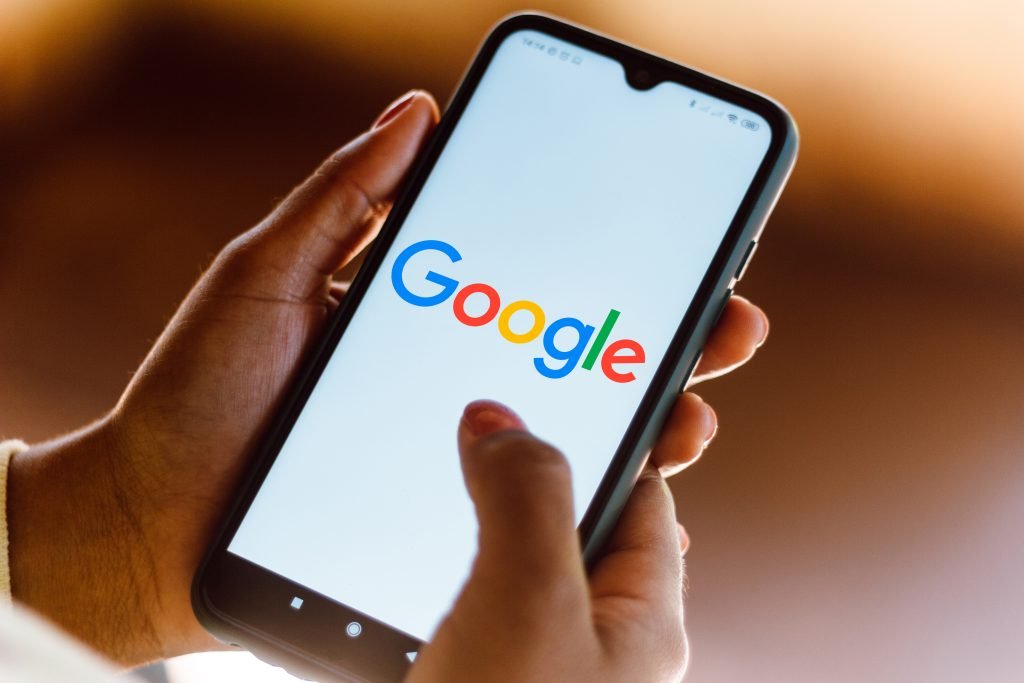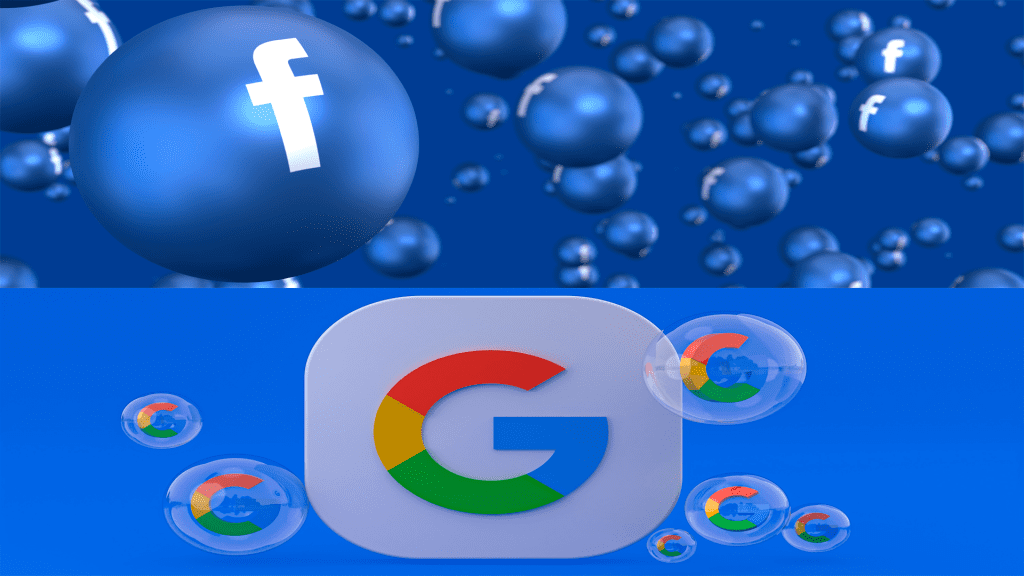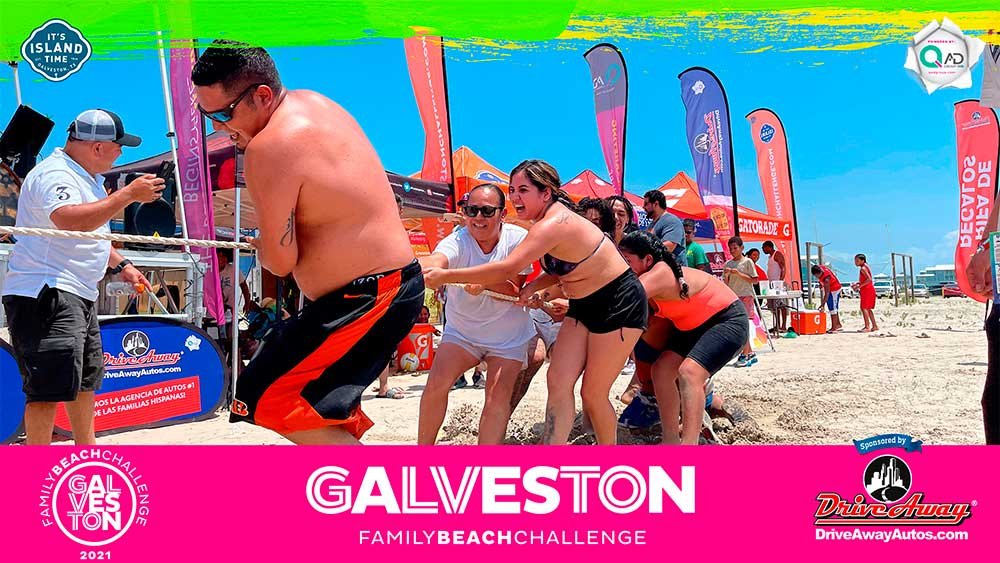Trends- What is Performance Marketing?

Performance marketing offers many benefits. One of the main ones is that it has a better optimization of the different marketing campaigns. One of the aspects in which it stands out compared to other strategies is in the measurement of results. A better measurement of results obtained can provide a more accurate picture of how a marketing strategy is maintained or how it works. You can focus on the most successful strategies first when you understand which ones are working. In turn, this results in an increase in investment or improvement, since all efforts will be directed towards areas with the best results. One of the most interesting aspects of performance marketing is that it allows you to measure the ROI (return on investment) of the actions carried out. With the use of famous cookies and pixels, it’s possible to know what each user does within a website. This is in contrast to traditional meters such as CPM (cost per thousand) that shows only how many times it has been shown, but not the number of people who have seen it. This marketing strategy is perfect for small businesses, because it reduces the costs in the investment made, which translates into a constant improvement in income and use of resources. It also allows you to know in advance the results that will be obtained from an advertising campaign with a certain budget. Performance marketing is clearly the evolution of traditional marketing. Do you need help running your campaigns? We know the best strategy! Get in touch with us. Q AD Group has more than 14 years in the marketing industry, working with brands of all types.
With the Galveston Challenge, organized by Q Advertising Group, Inc. Galveston has started the summer off!

This year, the 4rd Galveston Family Challenge was held at Stewart Beach, Galveston, Texas, on July 25th, 2021, as families head out for the summer. Our great media partners Estrella Media, Furia Deportiva, it’s Island Time, DriveAway Autos and City of Galveston have sponsored this experiential marketing campaign. Each of the 14 stations in the Galveston Beach Family Challenge allowed the participants to compete against other families. As many stations as possible could be accomplished in 3.5 hours for the challengers, who had a maximum of five opportunities to complete each one. All challenge stations were designed so that anyone older than 8 could participate! Teams competed in order to win hundreds of $3,000 in prizes. It’s up to you how much fun you and your team have! During this year’s challenges, a live band entertained and stimulated the participating families. This summer, don’t miss out on any of the fun! Our events are completely free! Reserve a spot for your family today! Through a strong calendar of events, Q Advertising will push your brand to the next level. Our agency provides a full range of marketing services for businesses of all sizes. The vast range of industries we work in has given us experience in marketing campaigns. Over the years, we have conducted over 277 experiential marketing campaigns and have developed a better understanding of what works and what we need to do to reach our clients’ target audiences. As a result of this experience, we are able to offer our clients the most effective and valuable service possible. This is the perfect time for brands to re-connect with consumers and leverage this opportunity. Reach out to us for sponsorship opportunities for one of our many upcoming events: info@qadgroup.com 1-888-991-3776 Visit our web: qadgroup.com Unleash the heroes in you!
5 Chrome extensions for marketers

If you want to have a successful strategy, there are many Chrome extensions for digital marketing that can help you. With these tools you can stay updated and apply the best practices in SEO, or in any other of the disciplines of digital marketing. For digital marketers it is a good option, since the extentions save time, which can in turn be invested in other activities. Not only that, but it’s also a great way to customize your browser. You can also, of course, turn them into one more tool for your work. Chrome extensions for digital marketing offer a wide variety of options that will be of great help to you. You will be able to perform almost all the tasks that are associated with online marketing. In addition to that, you can use them to extract your own data and that of the competition for your analyses. Here are our Chrome extension recommendations to help you with your digital strategy: 1.- Ahrefs SEO Toolbar The first Chrome extension on the list is Ahrefs SEO Toolbar. It should be noted that it is free and also works for Firefox. This extension provides data of great interest and relevance related to the different web pages for SEO. It also provides a detailed SEO report on the pages and checks broken links or positions in the SERPs among other data. Not only that, you also have the possibility of obtaining key SEO metrics from each website you visit and its search results in Google. If that wasn’t enough, it offers you metrics on keywords, such as search volume and keyword difficulty. In this way, you can have a more complete analysis of all the campaigns you carry out. 2.- SEOquake In second place on our list is SEOquake. It is another one of the best Chrome extensions for digital marketing, for it stands out for its search engine positioning. With it, you can perform a quick analysis of a web page and also be provided with a lot of valuable information for marketers. 3.- Bitly Another option is Bitly; it’s an extension that gives you the possibility of creating short and personalized links from any web page. When you have created short and recognizable links, it is more likely that they will attract more users interested in the content. Bitly is one of the best tools when it comes to this aspect. You have two ways to make these links. The first is by clicking on the extension located on the toolbar. The second is by right-clicking on a page to quickly create a short link to the current URL. This is automatically copied to the clipboard and ready to paste into a post, message, or document. 4.- Keyword surfer Among the Chrome extension options for digital marketing, you will find Keyword Surfer. It is a completely free tool that gives you the possibility to see search volumes directly in Google search. 5.- SEO Pro Extension SEO Pro Extension is a tool that allows you to check and analyze the main SEO information of a website. It is another of the Chrome extensions for digital marketing that you can use for free. With it, you can verify and study the data to obtain better search performance. To top it off, you can also get the meta tags, links, and scripts with just a few clicks. With SEO Pro Extensions, you will also be able to check the title and its length, create headlines on a page, images with and without tag attributes, internal and external links, as well as many other things. You may have noticed that the market has many Chrome extensions that are very useful for digital marketers, but the best thing is that you don’t have to choose just one. Each of the extensions has different functions that can help you with all of your business strategies. Do you need extra help with your digital marketing strategies? At Q Ad Group, we can help you. We are a multicultural agency with more than 14 years of experience with marketing and tools so that your campaigns meet the planned objectives.
Facebook Ads vs. Google Ads: which one should you use in your business?

Not sure which tool to use in the advertising strategy of your business? If this is the case, knowing the differences between Facebook Ads vs Google Ads can help you make the most appropriate decision for your company: 1.- User mindset Consumers on Google are looking for an answer to their questions or a solution to their needs. They search voluntarily, and the ads appear in search results, meaning that they are already advanced in their buying journey. In other words, they know what they want. While users are on Facebook, they are browsing through photos and news, interacting through comments, or chatting with their contacts. They are not actively searching for products or services; the ad just appears as it does on Google. This is significant in the dynamics between the advertiser and the audience. In Google, your landing page must match in design and include the keywords that you use in the campaigns. On Facebook however, you have to focus on building audiences with interests, demographics, and characteristics that match your ads. 2.- Budget Variation The costs per click will vary greatly depending on the sector in which you develop. It should be noted though that the cost in Google Ads is higher than in Facebook Ads, and even more in the industries with more competition. Certainly, Facebook is the most accessible option, economically speaking. So, if you are starting in this world of online advertising, a good way to get a good return on investment is to use Facebook Ads. Although Google Ads require a more expensive investment, you can obtain better results in conversions. If you have a good budget, this could be the best alternative to advertise your business. 3.- Audience segmentation A key point for audience reach is segmentation. In the case of Google, it works through keywords. It also allows you to select the times and territories where you want your ads to appear in searches. On Facebook the options to segment the public are much more varied. You can do it by territory (limiting it to an area of your city), age, gender, demographics, education, interests, and mobile devices. This could be more effective, but it depends on the type of business. In order to make a decision, you must bear in mind that on Facebook you can be more specific and create different types of audiences, while in Google Ads you have the keywords and purchase oriented users. 4.- Branding If you are looking for brand recognition, then Facebook Ads is for you. Keep in mind most of the time ads and campaigns reach people who do not know that the product or service exists. It’s a way to publicize your business and improve your positioning, so users will know everything you have to offer. Google Ads focuses on attracting people who have already made a journey in their purchase research. In fact, they may already be determined to make their purchase, but have not yet finalized the purchase of the product or service. It is true that in Google Ads you can also do branding; however, for this case it’s better to use Facebook. You can focus more on direct response activities with Google. There is something that is demonstrated in these differences. The two tools do not have to be rivals or have one stand out more than the other. In fact, they can work together perfectly to achieve all your goals. 5.- Different types of ads and objectives Another notable difference is the wide range of ads that can be created on Facebook. It gives you the ability to advertise your website, specific capture pages, and fan pages in addition to increasing the engagement on your page or in your app, or promote its download. It also allows you to reach people near any business, capture leads within this social network, and increase video views. This allows you to find various promotional options with ads that are based on what your business seeks to achieve. This does not mean there is no variety in Google Ads, as it has incorporated different ad formats such as universal application campaigns. It continues to focus on the ones that drive web traffic to a website, preferably a landing page, where there is a clear offer and call to action. Here you must analyze the difference between the multiple types of ads and the objectives that there are in Facebook Ads vs Google Ads. You must carefully study which ones are best suited to the marketing strategy of your business. What is the best for your business? Now that you know the differences of each one, how they work and the benefits they provide in different aspects, it’s time to develop your strategy. As you could see, both Google Ads and Facebook Ads are advertising platforms with great potential and the ability to adapt to any type of business. Having to decide on one of the two is not an easy job, but you don’t have to for the two platforms can be used in a complementary way, especially depending on the objectives to reach your audience. Comparing Facebook Ads and Google Ads will not lead you to a choice, but rather an understanding that they should be used in alignment, not opposition. It’s a good advertising strategy to take advantage of the power of paid search and increase the reach of social networks. You will however require a digital advertising strategy that aligns with the strengths of each platform. What you must understand is how to use each one to get the maximum return on investment and greater business growth. You have to think strategically, and in Q Ad Group, we like to support you in your projects, offering you our best service. If you need help for online advertising, content creation, reaching new clients, or any other marketing service we are always here to help.
The Galveston Challenge is back this July!

The Galveston Challenge is back, loaded with more excitement, more games, more fun, and more prizes! Don’t miss out on this fabulous family experience full of laughs and unique and unforgettable moments. The event is Sunday July 25th at Stewart Beach, Galveston, TX, at 11:00 A.M.. Don’t waste any time! Register your family to participate in this magnificent event and have the possibility of taking home more than $3000 in prizes! For more information visit www.galvestonchallenge.com or call 1-888-991-3776 Unleash the Heroes in you!
4 strategies to boost ecommerce sales in summer

With the arrival of summer, a new range of options open up to increase sales, marketing or business visibility. Summer is a period in which online stores can usually see their sales or KPI’s dropping. This is commonly due to many factors such as the vacation of many people. Free time also allows them to buy in physical spaces, so online sales are affected negatively. Not all the business sector sees this as a dark period. There are others that make a good profit during the summer, such as companies dedicated to tourism, hospitality, beach clothing stores, etc. To boost the sales of an ecommerce store in summer and obtain the best results, very specific actions must be taken to maintain a good level of conversions in the online store. 1.- Planning to boost the summer sales For these cases, you must be ready. You will not always have the best moments and there will always be times when things do not go as expected. This also happens in the digital and ecommerce world. Planning plays a central role in these dates and knowing how to act can be a key point in the future of the company. Planning marketing actions will ensure that when the time comes, everything happens in an organized and previously established way. Keeping options open for users to buy can be a plus as well. 2.- Test campaigns Not everything is bad for companies with the arrival of summer. If this has been foreseen, it is possible to act in the quickest and most efficient way. A good move to keep in mind is to do the so-called summer tests. In other words, it is doing what in previous months has not been possible due to the workflow. It’s a good time to take risks and take actions that have not been done yet before measuring results. Above all, in summer, users want to have experiences, so do not hesitate to explore options such as Inbound Marketing. 3.- Know how to take advantage of customers It’s often seen that in summer times, businesses that are not destined for summer products see their sales reduced through e-commerce. There are other factors however, that can help boost your businesses public awareness, such as social media. Running inspiring content campaigns to attract the attention of your target audience is ideal in summer. Remember that users have more free time; therefore, it is a good time to reach them on the channels in which they spend the majority of their time on the Internet. 4.- Knowing your growth possibilities If your company stops because of the summer dates, it’s very probable that your competition will too. This is where it can be very important to take action and gain advantage. Take the opportunity to carry out paid campaigns on social networks and in Google Ads. A quality marketing campaign that meets the needs of that audience in this period can be just the push your company needs to outperform your competitors. Paid advertising can help in many ways by boosting ecommerce sales in the summer. Advertising on social networks or on web pages such as Google Ads can make an offer or service visible to those customers who have previously contacted the brand. At Q Ad Group, we have the tools and equipment necessary to make the summer season very profitable for your company or business. Taking advantage of the competition in this period can be a reality through segmented and personalized digital marketing campaigns that will grow your business exponentially.
Get ready! Pro Challenge returns this July 29th

For all boys and girls who are passionate about sports and soccer: this is your opportunity. Pro Challenge is back in its July edition with more challenges, more adrenaline, and more fun. Try yourself in this challenge and take your training skills to another level. Parents: this is a unique event where your kids can enjoy a marvelous sports event, have fun and improve their skills. The event is this Thursday, July 29th at 6 PM at Bear Creek Park | Field # 10, 3535 War Memorial. Houston, TX 77084. Your player kit and official certificate for included for free! For more information, enter and register at www.theprochallenge.com
AMAZING BOXING NIGHT AT CLUB “NUESTRA RAZA”

Driveaway Autos – La Agencia de Autos #1 de las Familias Hispanas. Supporting Professional Boxing in the City of Houston Last Friday, July 2nd, a spectacular profesional boxing night was held at the “Nuestra Raza” club. An event called “Independence Fireworks”, which marks the return of live boxing to this well-known club. We had 10 exciting professional fights and debuts of great prospects in the world of boxing. In the main event fighting for the Super Bantamweight title we had Josue Morales against Miguel Angel Rebullosa, in a fight celebrating the independence day of the United States of America. We congratulate the new Super Bantamweight Champion from Houston TX. Josué Morales.
5 B2B INBOUND MARKETING STRATEGIES THAT YOU SHOULD USE

If you are interested in attracting new potential customers, then you are going to need several B2B inbound marketing strategies. The idea is that you can work with a variety of techniques that allow you to reach your prospects, the goal you are aiming for, naturally. Keep in mind that these are companies just like yours, so you should use a language that is at a more professional level. It’s different when working with B2C (Business to Consumer) marketing, since in that case, you are targeting final consumers. Inbound B2B marketing allows you to get the most out of digital channels through which you can constantly generate leads. For this reason, it’s extrememly important that you are clear about the strategies that you are going to apply to get positive results and new opportunities for business. Below are 5 strategies that may be useful for you: 1.- Align your marketing and sales teams The first thing you should do before you start looking to attract your B2B prospects is focus on the internal structure of your company. To do this, you will need to get your marketing and sales teams aligned in order to simplify processes and communication. This will create a consistent, two-way workflow. Suppose that the sales team is in charge of supplying the key information for the ideal customer and their requirements during their buying journey. The marketing team creates different content offerings to solve their doubts or concerns, ultimately educating them to a point of a made decision. The content generated by the marketing group will help the sales team build a good relationship with prospects. In addition, it will generate interest and even allow them to handle some sales objections that will translate into higher profits. 2.- Know your customers Some do not achieve success when working with Inbound B2B marketing because they forget a determining factor: knowing the customer. In fact, it may be one of the most important, since this is what gives you the possibility of having successful relationships with the prospects you need. Why is it so relevant to know so much about your customers? First, because it allows you to solve their problems, offering them exactly what they need. Secondly, because the cost of retention efforts is much cheaper than that of acquiring new customers. To achieve this, you will need to follow three fundamental tips: Search into the needs they have. By knowing their industry and their pain points, you will better understand what they are looking for before they say it. Learn how to market to customers the way they want to market. Keep in mind that this will change, since it depends on each client. You have to supply value and then go on sale. Listen to customer experiences, because in them you can find many answers and ideas. These can help you optimize your B2B Inbound marketing strategy for both loyal and potential customers. 3.- Take advantage of conversational marketing and chatbots It’s no longer about convincing customers through persuasion, but about helping them solve their problems and meet their needs. Interested prospects hope that you can solve any of the doubts they have in relation to what you offer. The communication you have with users is important, which translates into a conversational marketing strategy. This method focuses on allowing people to easily access communication channels with the company, regardless of the industry. Companies want to be heard and understood to finally receive your help. Talking about conversational marketing and not relating it to chatbots wouldn’t make sense. Nowadays, people have greater demands and prefer quick and precise answers to their questions. Thanks to advances in artificial intelligence, these softwares are becoming more and more useful and customizable. Although users know that these are chatbots and not real people, they still feel comfortable and cared for. These often help you in a number of ways, such as narrowing down a visitor’s focus and guiding them through their individual shopper’s journey. 4.- Bet on customization Working with tools that give you the ability to track and display the most relevant content allows you to have greater precision. This means that you can give a personal touch that makes each of the B2B clients feel special. It doesn’t matter if you are working your B2B Inbound marketing strategy with automation tools, the fundamental thing is that you customize it. This is the next step in conversational marketing, it goes beyond including the name – you can rely on their preferences. The idea is that you are able to respond to their needs. Using retargeting ads is also an excellent option in this case, since they follow an audience that has visited your site. It’s a way of making your existence known and reminding them that it’s there, which will also help you to attract new prospects. 5.- Use video marketing More and more users consume a greater amount of content in audiovisual format. They can be creative videos, lives, virtual events or meetings. This is because this is one of the best ways to connect emotionally with people, generating interest, engagement and conversations. This is a clear sign that you should start to exploit the full potential that video marketing has to offer. Currently, people come across these materials in places they did not exist before. They are now found in emails, social media, blog posts, presentations, reviews, landing pages, and more. The key is that you continue to increase the creation of content in audiovisual format, since the audience demands it. Take into account making videos adjusted to the current pace of life, which is quite busy. This will also depend on the topic you are dealing with. As you can see, the techniques that you must apply to be successful are not that complicated, you just have to know how to work them. It’s about learning to use them individually so that you can later complement one with the other
The City of Galveston Kicked Off the Summer with the Galveston Family Challenge Hosted by Q Advertising Group, Inc.

The City of Galveston Kicked Off the Summer with the Galveston Family Challenge Hosted by Q Advertising Group, Inc. Challenge stations, live music, $3000+ in prizes and so much fun! As our communities are opening up and families are venturing out for the summer, Q Advertising hosted the third Galveston Family Challenge on Sunday June 13, 2021 at Stewart Beach, Galveston, Texas. The challenge is an experiential marketing initiative sponsored by the City of Galveston, It’s Island Time, DriveAway Autos, Gatorade and our great media partners Estrella Media, Furia Deportiva. The sand on the beach, fresh air, and the waves were a perfect setting for over 55 families to unleash their inner heroes! The Galveston Beach Family Challenge consisted of 14 Stations that allowed family members and friends to compete one on one or as a team against other participating families. The challengers had up to 5 chances to successfully complete each station and accomplish as many stations as they could in the 3.5 hour period. Each challenge station was designed so that anyone over the age of 8 could participate in the fun! Over $3000 worth of prizes motivated teams to compete and push themselves to be the top group of heroes. The level of fun you and your team experience depends on you! For this year’s challenges, we incorporated a live music band to entertain and stimulate our participating families. Feedback received from the participants showed that they were eager to get out on the course and enjoy a beautiful sunny day at the beach. Summer is officially here and we don’t want you to miss out on all of the fun! Reserve your family a spot in our upcoming events with completely free registration! Q Advertising has over 13 years of experience and is more than prepared to take your brand to the next level with a strong calendar of events scheduled for the 3rd and 4th quarter of 2021. We are a full-service Marketing Agency with extensive experience servicing both large and small businesses. Our experience comes from numerous marketing campaigns across a wide range of industries. After conducting over 277 experiential marketing campaigns we have developed a broader perspective of what works and what is needed for our diverse cliental to reach the right consumer. Utilizing this experience allows us to offer our clients the most valuable and effective service for their business. Now is the time for brands to take advantage of this opportunity and reconnect their brands with the public. Reach out to us for sponsorship opportunities for one of our many upcoming events: info@qadgroup.com 1-888-991-3776 Visit our web: qadgroup.com Thank you to all our loyal sponsors, partners and participants! June 15, 2021 Contact: Aldo Quiroz Q Advertising Group, Inc Email: aldo@qadgroup.com Phone: 1-888-991-3776
